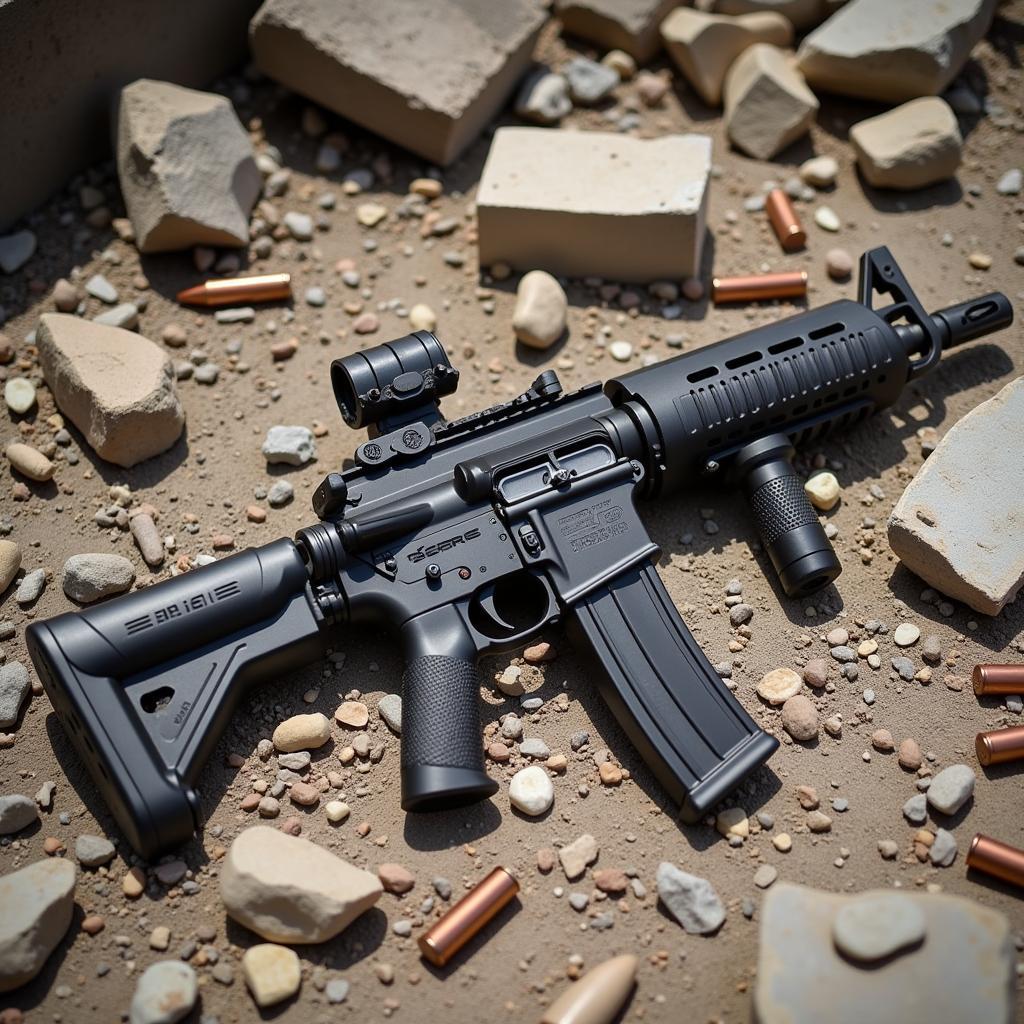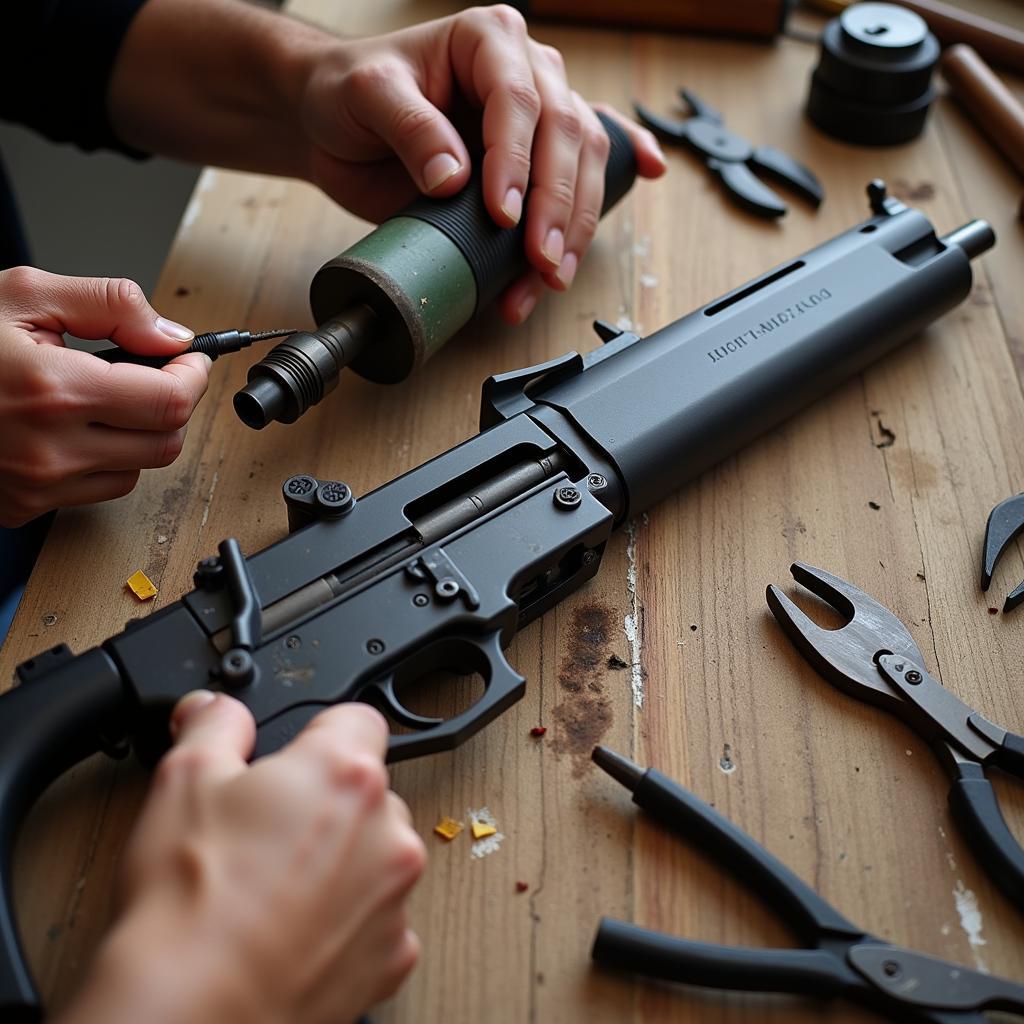African Homemade Guns: A Complex Reality
African Homemade Guns, often crudely manufactured firearms, are a stark reality in various regions across the continent. These weapons, crafted out of scrap metal and readily available materials, highlight a complex interplay of factors, from resource scarcity and economic hardship to conflict and the breakdown of traditional security structures. Understanding the context surrounding these homemade weapons is crucial for addressing the challenges they pose.
The Socioeconomic Drivers Behind African Homemade Guns
The proliferation of homemade guns in Africa is deeply intertwined with socioeconomic conditions. Poverty and unemployment can drive individuals towards illicit activities, including the production and use of these weapons. In regions lacking economic opportunities, crafting and selling homemade guns can become a means of survival, even though it perpetuates a cycle of violence. Moreover, limited access to formal education can contribute to a lack of awareness about the dangers of these weapons and the alternatives available.
The Role of Conflict and Instability in Fueling the Demand
Conflict and instability are major catalysts for the spread of African homemade guns. In areas experiencing armed conflict or civil unrest, access to formal weaponry is often restricted. This creates a demand for readily available alternatives, even if they are less reliable and more dangerous. The presence of armed groups and militias can further exacerbate the situation, as they often rely on homemade guns to equip their ranks. This contributes to a climate of fear and insecurity, making it even more difficult to establish lasting peace.
 Homemade Gun in a Conflict Zone
Homemade Gun in a Conflict Zone
The Craftsmanship and Materials of African Homemade Guns
The construction of African homemade guns varies widely, reflecting the ingenuity and resourcefulness of their creators. These weapons are typically made from scrap metal, pipes, and other readily available materials. The craftsmanship can range from simple, single-shot firearms to more complex designs, including rudimentary automatic weapons. The lack of standardization and quality control poses significant safety risks, both to the user and those around them. The crude nature of these weapons often leads to malfunctions, accidental discharges, and injuries.
The Legal and Ethical Implications of Homemade Weapons
The legal status of African homemade guns is often ambiguous, varying from country to country. In some regions, possession and manufacture are strictly prohibited, while in others, regulations are less clear or poorly enforced. This legal gray area complicates efforts to control the spread of these weapons. Ethically, the proliferation of homemade guns raises concerns about human safety, the perpetuation of violence, and the erosion of social trust. Addressing these complex issues requires a multi-faceted approach that considers both the legal and ethical dimensions.
 Construction of a Homemade Gun
Construction of a Homemade Gun
What are the dangers of using African homemade guns?
The inherent dangers of using these improvised firearms cannot be overstated. Due to the lack of quality control and often crude construction methods, these weapons are prone to malfunctions, accidental discharges, and explosions. This puts the user at significant risk of injury or death.
Are there any efforts to control the spread of these weapons?
Yes, various initiatives are underway to address the proliferation of African homemade guns. These efforts include strengthening legislation, enhancing border control measures, and promoting community-based disarmament programs. However, the effectiveness of these measures often varies due to challenges such as limited resources, porous borders, and ongoing conflict.
How do homemade guns impact local communities?
The presence of homemade guns contributes to a climate of fear and insecurity within communities. They can be easily used in criminal activities, inter-communal violence, and domestic disputes, escalating tensions and undermining social cohesion.
Conclusion
African homemade guns represent a complex challenge with deep roots in socioeconomic conditions, conflict, and the breakdown of security structures. Addressing this issue requires a comprehensive approach that tackles the underlying drivers, strengthens legal frameworks, and promotes community-based solutions. Understanding the complex realities surrounding African homemade guns is essential for fostering peace, security, and development across the continent.
FAQ
- What are the primary materials used to make African homemade guns? Scrap metal, pipes, and other readily available materials.
- Why are homemade guns prevalent in certain African regions? A combination of factors, including poverty, conflict, and limited access to formal weaponry.
- What are the risks associated with using these weapons? Malfunctions, accidental discharges, and explosions are common due to poor construction.
- Are there any efforts to address this issue? Yes, various initiatives are underway, including legislative measures and disarmament programs.
- How do these weapons impact communities? They contribute to fear, insecurity, and an escalation of violence.
- Are there any alternatives to using homemade guns? Promoting peaceful conflict resolution, addressing socioeconomic challenges, and providing alternative livelihood opportunities are crucial.
- What are the long-term implications of the prevalence of homemade weapons? Continued violence, instability, and hindered development are potential long-term consequences.
If you need further assistance, please contact us: Phone: +255768904061, Email: [email protected] or visit us at Mbarali DC Mawindi, Kangaga, Tanzania. We have a 24/7 customer service team.